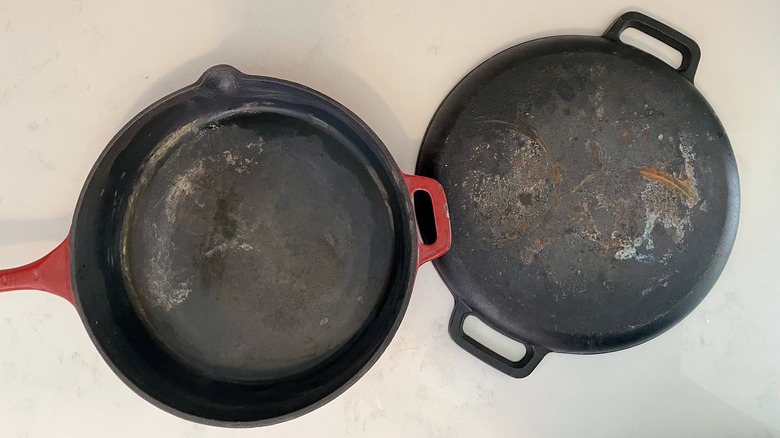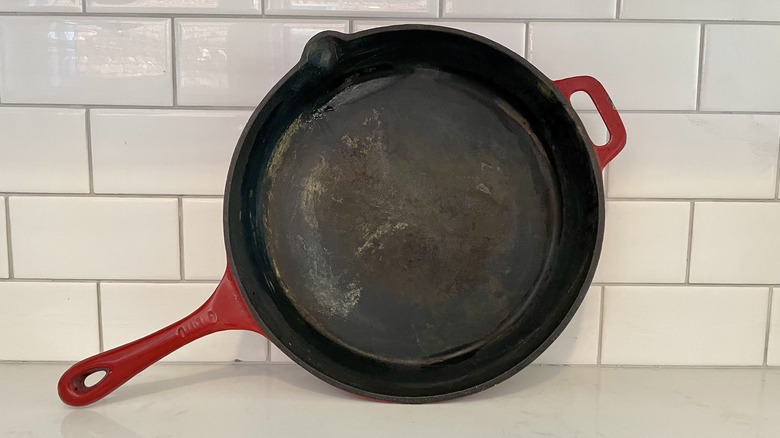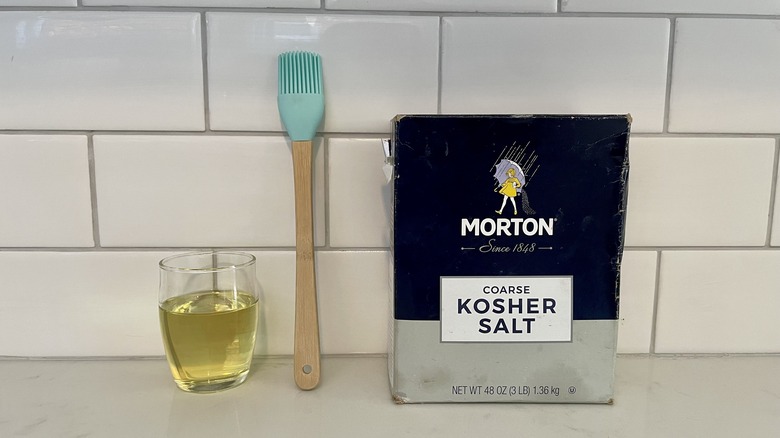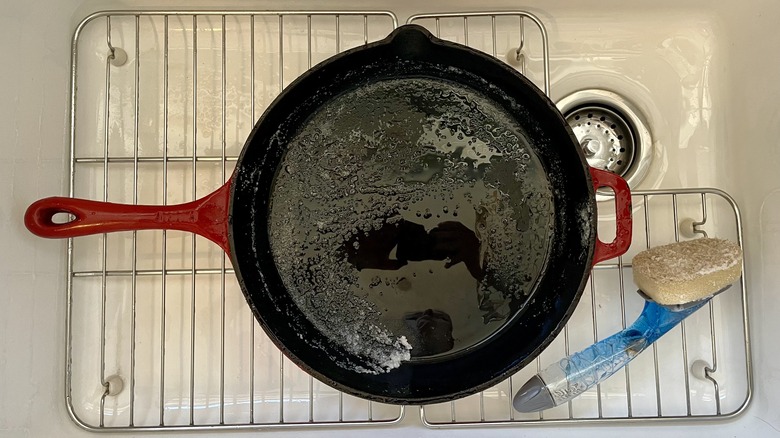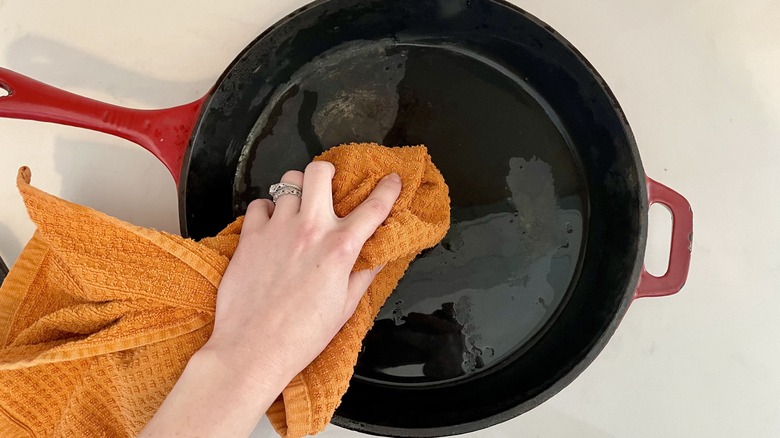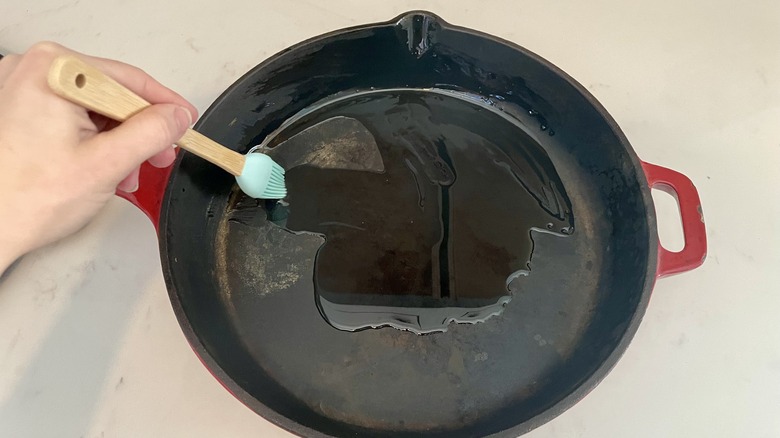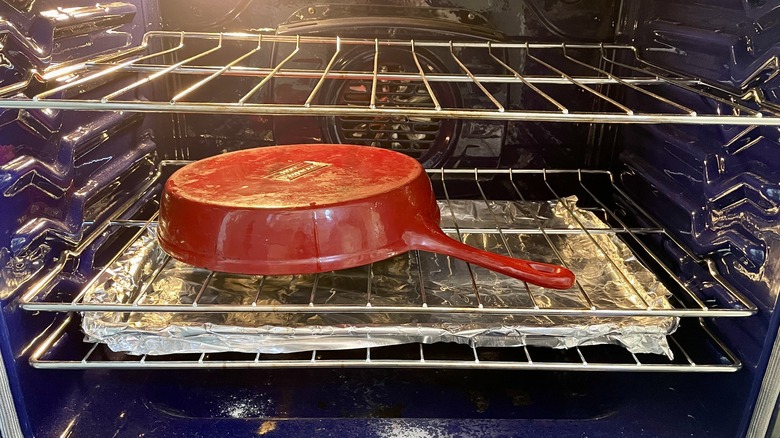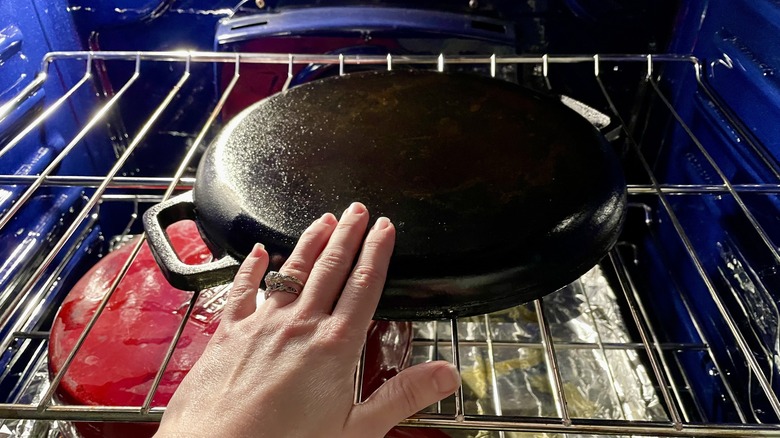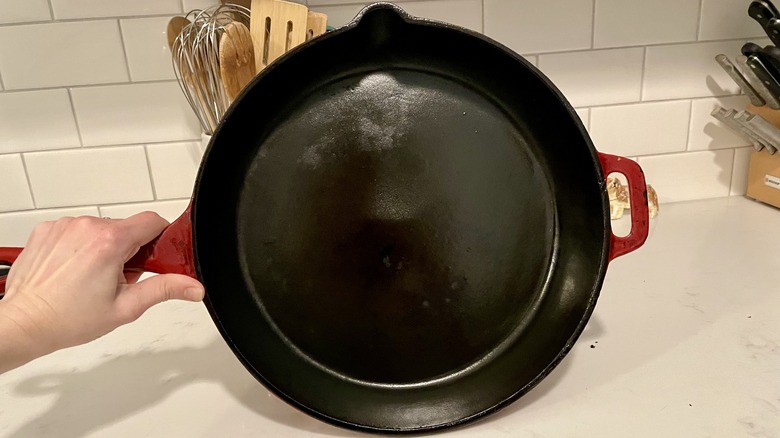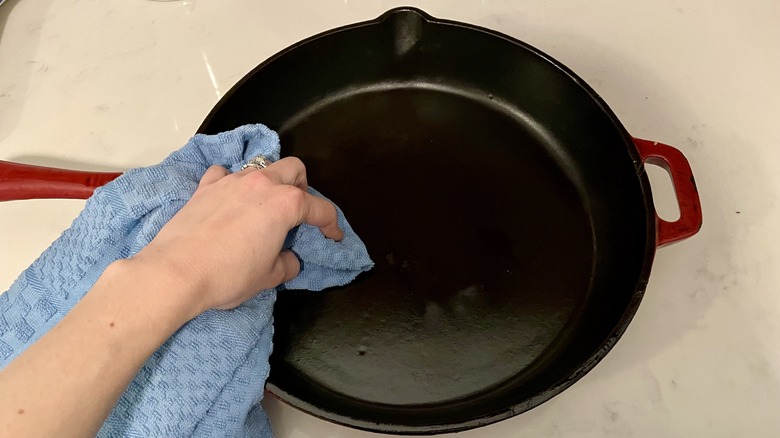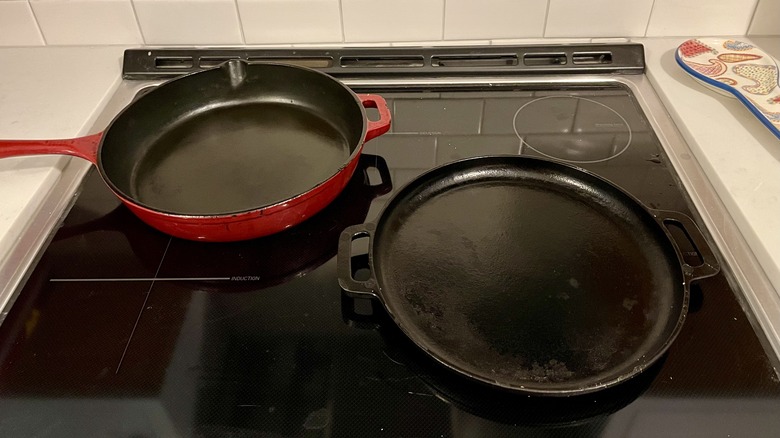How To Season A Cast Iron Pan, New Or Old
A good cast iron pan will last a lifetime. Cast iron is known for holding heat well and being incredibly durable. With a proper coating, cast iron is also one of the best options for a naturally nonstick surface, making it great for almost any cooking. But some people shy away from it as it can be perceived as requiring more work. While some maintenance is needed, it is by no means labor-intensive and can be taken care of by anyone with minimal effort. Cast iron is used to make pots, pans, dutch ovens, skillets, and so much more. Once you start using one, you will never want to go back.
Cast iron can also be expensive, but the good news is you can often find vintage pieces at thrift stores. You may be tempted to pass by old, dull, or rusted cast iron, but with some TLC, these cast iron pans will be better than the day they were made.
What is seasoning?
First, you may want to know what "seasoning" is. Seasoning refers to a baked-on oil coating. When the oil is baked onto the pan, it turns dark and carbonizes. This protects the pan and creates the non-stick coating cast iron is known for.
Some cast iron pans come seasoned, while others do not. You will be able to tell if your pan needs to be seasoned by checking for rust and by looking at the color. The color of a seasoned pan should be deep black and slightly shiny. If you have a new pan that has not been seasoned, it will look like new gray metal. An older unseasoned cast iron pan may show signs of rust. Any unseasoned cast iron pan will need to be seasoned before use.
Over time, seasoning should build up, but if a pan has not been used in a long time or has been over-cleaned, a new seasoning layer will need to be applied. This is relevant only to pans with exposed cast iron. There are cast iron pans that are either partially or fully coated in enamel. The red pan pictured above is enameled on just the outside, so only the exposed metal will require maintenance when seasoning.
What tools are needed
As mentioned, the process of reasoning cast iron is pretty straightforward and does not require many items. Obviously, you need a pan that requires some TLC. From there, you will need some dish soap and water. If there is any rust on the pan, you will need either some steel wool or a scrubber and some coarse salt.
Finally, you will need oil. When seasoning, always use an oil with a high smoking point. The smoke point is literally the temperature at which the oil will burn and start to smoke. We want to carbonize the oil, not set off a smoke detector. So, no olive oil, coconut oil, or butter.
We recommend canola, which has a smoke point of at least 400 F. Many companies sell "reseasoning spray," but these are typically just canola oil in a spray bottle, so you might as well save the money and use what you have in the house. You can also use grapeseed or sunflower oil, but these tend to be more expensive. Use whatever you are most comfortable with.
Remove any rust
The first thing you need to do is check your pan for rust. If you find rust, you must remove it before you proceed. You have a few options for this: take a little steel wool and scrub away. Or you can simply scrub using coarse ground salt and a rough sponge.
The goal here is to create a rough surface that will sand away the rust, leaving only clean metal. Using your chosen method, scrub until all rust is removed.
Clean with soap and water
Next, clean your pan with soap and water. Contrary to what some have been told, you can clean your cast iron with soap and water. Especially since we are about to reseason it anyway, make sure to get all debris off, and thoroughly rinse to ensure no soap residue. Carefully dry your pan.
Coat in oil
Coat any exposed cast iron in a light, thin layer of oil. Once again, if you have a pan enameled on the outside, the enameled surface does not need to be oiled; oil only the exposed iron. Oil can be sprayed on if you have a spray can, or can be brushed on with a pastry brush, or even wiped on using a spare cloth or paper towel.
Bake in the oven
After it's oiled, place the cast iron upside down in the oven. This will prevent oil from pooling and forming an uneven or wavy layer of seasoning.
Place a baking tray covered in foil on the shelf beneath your pan to catch any falling oil. Bake your cast iron at least 350 F, but ideally higher, around 400 F. The baking oil can produce a strong, somewhat unpleasant scent. This is going to be smelly, so be sure to open a window and turn on your vent hood if possible.
If you have access to a grill, you could use it instead of your oven to season cast iron, as it will be able to achieve high concentrated temperatures and will not release unpleasant fumes in the house.
Rest your pan
After an hour, turn off the oven. Let your pan sit inside and cool down. Repeat this and the previous step as many times as needed to achieve a glossy back finish. Typically, 1-3 layers should be sufficient.
Wash and dry
Finally, wash and dry your pan one last time before putting it away. This time, no soap is required. Make sure the pan is completely dry before storing it to prevent additional rust from forming.
Basic cast iron care
Now that your cast iron pan has been restored to its full glory, make sure to take care of it. Cast iron pans can be washed after each use; it's okay to use soap, but do not aggressively scrub your pan, as this will remove your newly restored coating.
Also, cast iron must be kept dry when not in use, as it will rust if water is left on it. Acidic foods such as tomato sauce should not be cooked in cast iron as it can eat away at the coating and can give a metallic taste to food.
If you notice your seasoning coating getting thin again, be sure to reseason as needed. However, this should not be necessary with regular use and proper maintenance.
Recipes to test your cast iron's new seasoning
Cast iron is incredibly versatile. One of the advantages is that it can go from stove to oven seamlessly. This makes it great for things like cast iron cornbread but also makes it a great option for soup, stew, and baked chicken breast. You can also use it to make a crispy Monte Cristo sandwich, buttermilk pancakes, or anything else on a skillet.
